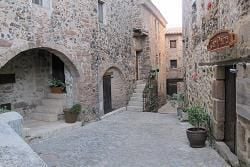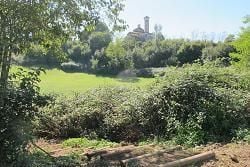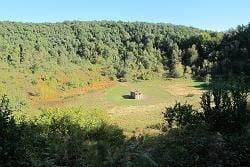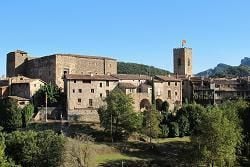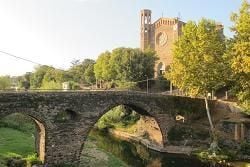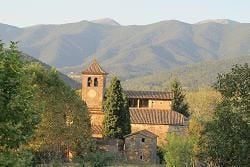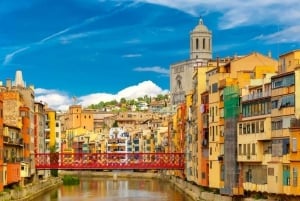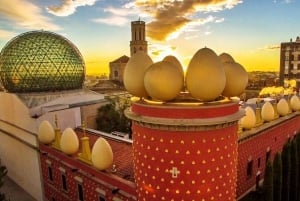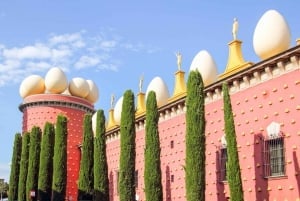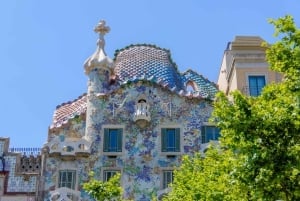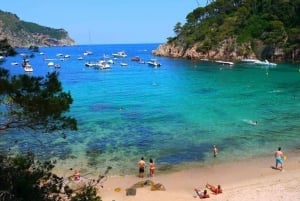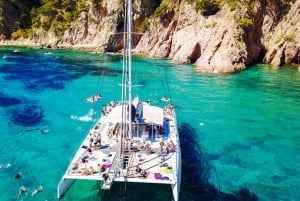Olot
The town of Olot located in the heart of the Garrotxa Volcanic Area Natural Park, offers visitors a wide variety of things to do and see, both within the town and in the unspoilt outskirts on this area of the , not to mention the amazing gastronomy.
Olot has witnessed many important events in the past, especially since the Middle Ages. By taking a stroll through its Plaça Major (main square) or along the Passeig Blay (the town’s main rambla) you can see various examples of modernist houses, such as Gaietà Vila or the Casa Solà-Morales dating from the 18th century and lovingly restored.
The renaissance door to the town’s hospital and the ancient bullfighting ring (one of the oldest in Spain) are also of interest.
The streets between the Plaça Major and the Sant Esteve church are filled with fashionable shops and art galleries and the Passeig Blay is lined with lively restaurants and cafés.
Besides being an important tourist centre, today Olot retains much of its textile industry which flourished in the 18th century and it is also well known for its traditional workshops producing religious statues.
Olot and its surrounding areas have served as inspiration for many artists. The textile industry led to the emergence of Olot as an artistic centre. As a result, a public school of drawing was founded in 1783.
One of the pupils of this school, Joaquim Vayreda i Vila (1843-94), founded the so-called "Olot School" of painters which introduced a distinctive and eclectic style of landscape painting depicting the Garrotxa region, still commonly seen today.
Some of the best pieces of art produced by the "Olot School" can be seen in the Museu Comarcal de la Garrotxa, which occupies a converted 18th century hospital building.
The town is located in a region of many inactive volcanoes, the most well known of which are Montsacopa, Croscat, Santa Margarida, Cairat and Garrinada.
The lush green vegetation, due to the weather with fairly high level of rainfall in the area, has helped to prevent the erosion of the volcanoes.
The Santa Margarida volcano is located 5 kilometres from Olot and is one of the best preserved volcanoes in the region. You can actually walk 70 metres down into its grassy crater measuring 500m in diameter to visit the ruined chapel of Santa Margarida de la Clot.
The beautiful beech forest known as the Fageda d’en Jordà, is located 4km from Olot. It is one of the largest beech forests in Europe and has inspired many artists.
The best time to visit is undoubtedly in the autumn when the leaves are turning to a deep golden colour.
Less than 10kms from Olot lies the historical medieval village of Santa Pau. Its 13th century castle has been preserved, together with remains of the old wall and gothic and renaissance-style houses line the narrow streets and cobbled alleys, which lead to the arcaded Plaça Major with its Gothic church of Santa Maria. This church, dating from the 15th century, and the Plaça Major are the two most important features of this lovely village.
Be sure not to leave Santa Pau without having tried the regional dish of "fesols" (white beans) with "butifarra" (sausage), a tasty example of traditional Catalan cooking.
On the outskirts of the village, the 12th century Romanesque church of la Mare de Déu dels Arcs is well worth a visit.
Santa Pau celebrates its "Festa Major" on 15th August.
Top attractions in Olot:
- Plaça Major
- Passeig Blay
- Modernist houses
- Church of Sant Esteve
- Museum and Archive
- Volcano museum in the Torre Castanys, with a lovely botanical garden
Special dates to consider when visiting Olot:
- "Festa Major"; 8th September
- Sant Lluc; 18th October
- Gastronomy fair; last week in November
Local market; Every Monday
And more information in …. Olot


